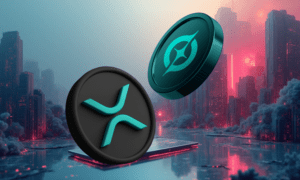Introduction
Have you ever wondered how the seals, gaskets, and tubes you see in everyday machines are made? Behind these durable and flexible products stands the expertise of a rubber extrusion manufacturer. This process transforms materials like EPDM rubber and neoprene rubber into perfectly shaped components that are vital in industries such as automotive, construction, and electronics. From design to final inspection, every step requires skill, precision, and quality control. Let’s go inside the process to see how it all happens.
Understanding Rubber Extrusion
Rubber extrusion is a process that pushes raw rubber through a shaped die to form continuous profiles with consistent shapes. Imagine squeezing toothpaste from a tube — the paste takes the shape of the nozzle. In the same way, a rubber extrusion manufacturer uses high-tech machines to create rubber seals, tubes, and strips with exact dimensions.
The choice of material plays a major role in the process. EPDM rubber (Ethylene Propylene Diene Monomer) is often used for its resistance to sunlight, ozone, and weathering, making it ideal for outdoor seals and gaskets. On the other hand, neoprene rubber offers great resistance to oils, chemicals, and temperature changes. This makes it a favorite for industrial and marine applications. Both materials are widely used in extrusion due to their flexibility and long lifespan.
Step 1: Material Preparation
Before extrusion begins, the rubber compound must be carefully prepared. This involves mixing raw rubber with additives such as stabilizers, pigments, and curing agents. Each ingredient serves a purpose — stabilizers improve durability, pigments give color, and curing agents help the rubber harden properly during vulcanization.
A rubber extrusion manufacturer ensures that every batch of rubber compound meets strict standards. Uniformity in the mix is essential because even small variations can affect the final product’s quality. Once the mixture is ready, it is fed into the extruder for shaping.
Step 2: The Extrusion Process
The heart of the manufacturing process lies in the extrusion itself. The prepared rubber compound is fed into a heated barrel where it is softened. Inside the machine, a rotating screw pushes the rubber through a specially designed die. The die determines the final shape of the product — whether it’s a circular tube, a flat strip, or a custom-designed seal.
Temperature control during this stage is very important. If the rubber is too hot, it can burn or deform; if too cold, it will not flow smoothly. Skilled technicians monitor the process closely to ensure consistency and precision. The freshly extruded rubber, often referred to as a “green” product, is then cooled before the next stage.
Step 3: Vulcanization (Curing)
After extrusion, the product is soft and lacks strength. To make it durable and elastic, it undergoes a process called vulcanization. This involves heating the rubber to a specific temperature to form cross-links between polymer chains. The result is a product that can stretch, bend, and resist heat without losing its shape.
For example, EPDM rubber seals used in car doors need to stay flexible in both hot and cold weather. Vulcanization ensures this flexibility and resilience. Similarly, neoprene rubber tubing must withstand oil exposure and mechanical stress, which vulcanization helps achieve.
Step 4: Cutting, Finishing, and Inspection
Once the rubber is cured, it’s time for finishing. The continuous length of extruded rubber is cut into specific sizes according to customer requirements. Some products may undergo secondary operations like adhesive application, hole punching, or surface coating.
Quality control plays a key role here. A rubber extrusion manufacturer inspects each product for dimensional accuracy, surface finish, and elasticity. Even a slight defect can cause problems in its final use, especially in precision industries like automotive manufacturing. Advanced measuring tools and inspection systems ensure that every piece meets the set standards.
Applications of Extruded Rubber Products
Rubber extrusion is used in many industries because of its versatility. In the construction sector, EPDM rubber is used for window and door seals due to its excellent weather resistance. In the marine and industrial fields, neoprene rubber products are used in hoses, belts, and protective covers because of their oil and heat resistance.
You’ll also find extruded rubber parts in electrical enclosures, HVAC systems, and even medical equipment. The ability of a rubber extrusion manufacturer to customize shapes and sizes makes this process vital for countless applications.
Innovation and Sustainability in Rubber Extrusion
Modern rubber extrusion is not only about precision but also about sustainability. Many manufacturers now focus on reducing material waste and energy consumption. Recycled rubber compounds are being introduced in non-critical parts to minimize environmental impact.
Automation and computer-controlled extrusion lines also help improve accuracy and consistency. These technologies allow manufacturers to produce high-quality EPDM rubber and neoprene rubber products more efficiently while maintaining eco-friendly standards.
Conclusion
The journey from raw rubber to a perfectly shaped gasket or seal is a remarkable example of industrial precision. A skilled rubber extrusion manufacturer combines technology, expertise, and innovation to produce components that are reliable, durable, and essential for modern life. Whether it’s EPDM rubber weather seals or neoprene rubber tubing, each product goes through a detailed process to ensure top performance.
Rubber extrusion might seem simple on the surface, but behind every finished product lies a world of science, engineering, and craftsmanship — shaping the materials that keep our machines running and our world connected.





























